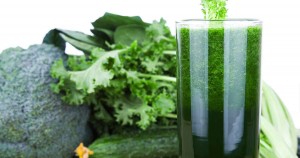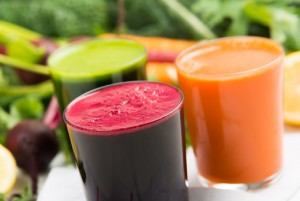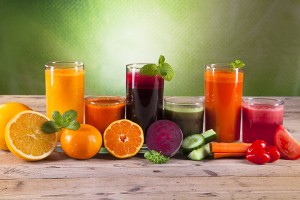
Tired of thinking of what else you can do with your vegetables? Why not try to make a vegetable juice?
Vegetables contain substantial carbohydrates, which supply most of the energy used to perform work. They have vitamins that control the chemical reactions within the body to convert food into energy and living tissues.
Also, vegetables contain minerals, which are necessary for the functioning of nerves and muscles and are the building material for some body tissues. Lastly, vegetables have antioxidants such as beta-carotene, vitamin C, vitamin E and selenium that prevent our body from cancer and other diseases.
Based on the 2000 Nutritional Guidelines for Filipinos, recommended consumption of vegetables daily is at least two to three servings. A serving of vegetable is equivalent to ½ cup or 40 grams for non-leafy and 1 cup or 25 grams for leafy.
The 2013 National Nutrition Survey conducted by the Food and Nutrition Research Institute, Department of Science and Technology (FNRI-DOST) reported that Filipinos consumed only 114 grams/day of vegetables. This amount minimally increased from the 2008 vegetable intake of 110 grams.
To make vegetable more attractive and palatable, try a new preparation and way of serving it. This will help improve the consumption of vegetables. Why not try to make a vegetable juice!
Our body can absorb nutrients from liquid foods easier than that from the solid ones. A study conducted by the American Association for Cancer Institute suggested that puréeing or juicing vegetables results in smaller particle size and also mechanically disrupts the plant cells. Thus the carotenoids which comprise the group of fat-soluble pigments found in plants and have antioxidant effects, are presumably more available in the intestine for absorption.

The process of making vegetable juice includes the separation of the vital nutrients and enzymes from the fiber, or pulp. Ideally, it would be best to drink the juice with the pulp since it is high in fiber. Fiber provides important health benefits, from preventing gastrointestinal disorders to promoting normal bowel function. It also promotes satiety, help control serum cholesterol and reduce the risk of heart disease.
For people who cannot tolerate consuming the fibrous material of the vegetable juice, there is still a need to continue eating vegetables, legumes and whole grains in combination with fresh juices. This will ensure that we get the maximum amount of nutritional value from what we eat.
Preparing vegetable juice is easy as ABC. Make sure the vegetable is fresh and free of spots and bruises. Vegetables should be washed properly before peeling or cutting into workable strips. Preparing juice also depends on the type of juicer used, so make juice according to juicer instructions.
Vegetable juice can be stored in the refrigerator for about a day without losing too many of its important nutrients. It is, however, more advisable to drink it right after it was prepared. Juice can be prepared by using a single vegetable, or better, use two or more different types. For example, parsley, celery stalks and carrots can make a refreshing drink. Cucumber and malunggay leaves can be an exciting alternative to ordinary juices and beet, carrots and parsnip can offer a colorful and healthy thirst quencher.
Don’t be afraid to explore the tastes of different vegetable-mix juices. Just take note of some vegetables that have strong flavors and also, let your taste buds be your guide.
Consume vegetable juice regularly; if possible, daily. Making your own fresh juice instead of buying assures the quality and affordability of the

vegetables you are consuming.
Vegetable juice can give your diet a healthy boost. Try it, and be refreshed and healthy.
For more information on food and nutrition, contact: Dr. Mario V. Capanzana, Director, Food and Nutrition Research Institute, Department of Science and Technology, General Santos Avenue, Bicutan, Taguig City; Telephone/ Fax Nos: 837-2934 or 837-3164; Direct Line:839-1839; DOST Trunk Line: 837-2071-82 local 2296 or 2284; e-mail: mvc@fnri.dost.gov.ph or at mar_v_c@yahoo.com; FNRI-DOST website: http://www.fnri.dost.gov.ph. Like our Facebook page at facebook.com/FNRI.DOST or follow our Twitter account at twitter.com/FNRI_DOST. (Imelda Angeles-Agdeppa, FNRI-DOST/PIA-Caraga)








